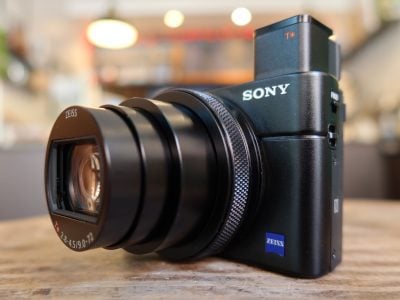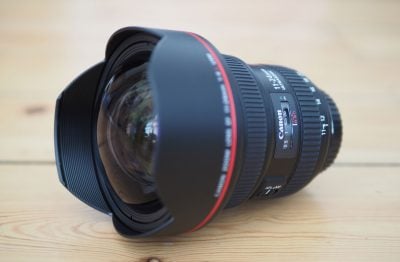Canon EF 11-24mm f4L USM review
-
-
Written by Gordon Laing
Quality
To evaluate the real-life performance of the Canon EF 11-24mm f4L USM, I shot this exterior scene at every aperture setting using a full-frame Canon EOS 5DS mounted on a tripod. The 5DS was set to 100 ISO the lens focused on the center of the composition. I shot in RAW and processed the files using Adobe Camera RAW with sharpening of 50 / 0.5 / 36 / 10 to bring out the finest details; I also disabled all lens corrections so you can see exactly what’s going on behind the scenes. The corner and center crops shown below were taken from the areas marked with the red rectangles below and presented at 100%.
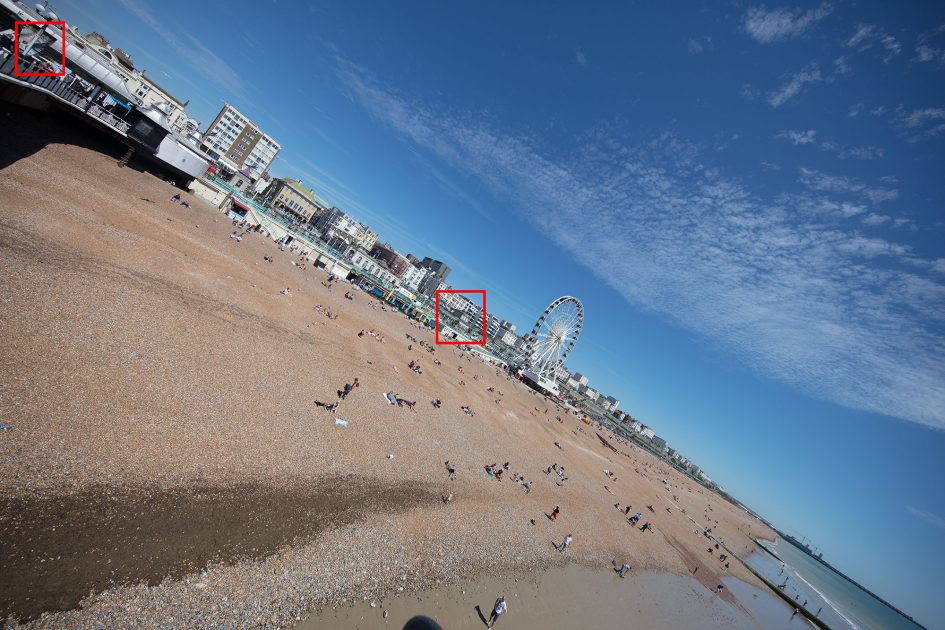
Zoomed to its widest focal length, the EF 11-24mm f4L USM delivers impressively sharp results across the frame even at its maximum aperture. In terms of real-life detail, there’s very little to be gained from stopping the aperture down, allowing you to shoot confidently at f4 if light levels demand. You will however notice details softening as soon as f11 though due to diffraction, which becomes progressively worse at f16 and f22. Use small apertures with caution, unless you absolutely need to block incoming light or desire the maximum depth-of-field.
With lens corrections disabled, there’s clearly some fringing visible in high contrast areas towards the corners, although remember you’re looking at 100% crops from 50 Megapixel images here, so the fringing is more subtle than it seems when the entire image is considered. Closing the aperture down does nothing to combat the fringing, but as illustrated in the main review, it’s easily and effectively eliminated using in-camera corrections for JPEGs – indeed in my test JPEGs there’s no evidence of fringing at all. Many RAW converters also do a good job at eliminating fringing.
You’ll also notice some vignetting (darkening in the corners) at the largest apertures – something that’s inevitable on this type of lens, although again something that’s easily corrected by the camera or RAW processor. You’ll also see that it’s greatly reduced by f5.6 and gone by f8.
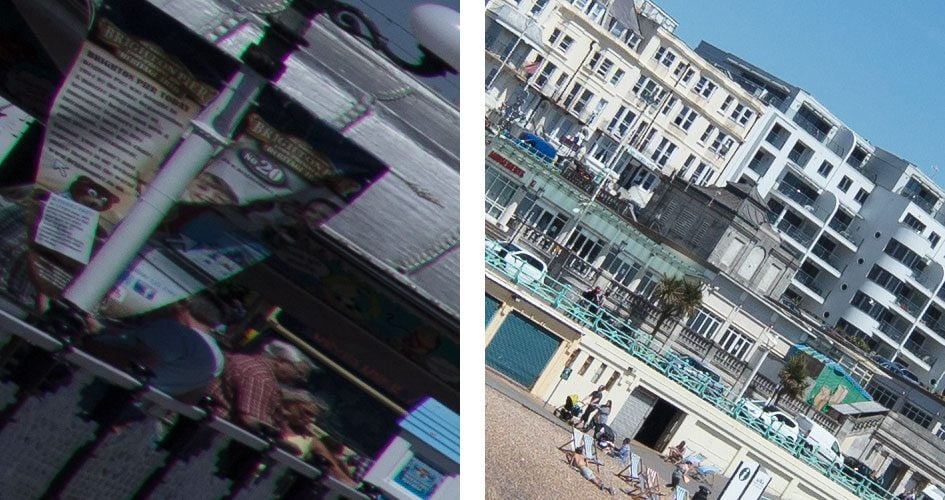
Above left: corner crop, above right: centre crop. Both 100% at 11mm f4
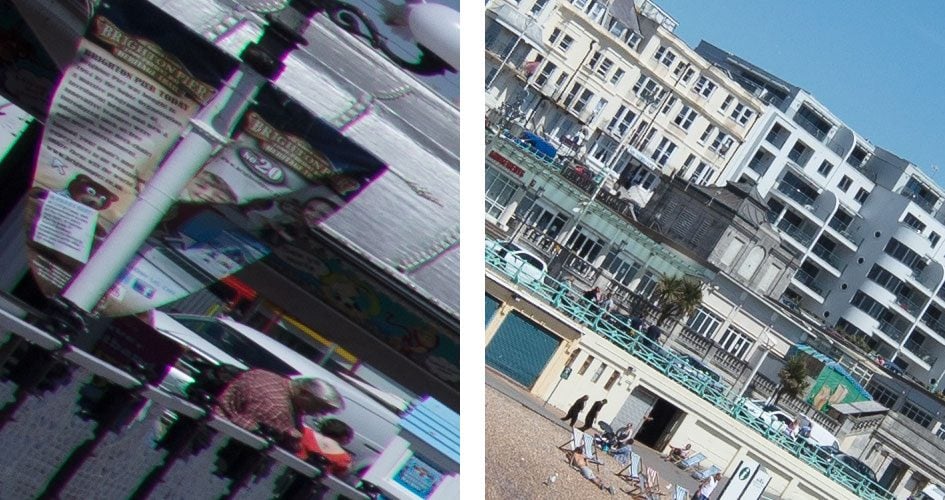
Above left: corner crop, above right: centre crop. Both 100% at 11mm f5.6
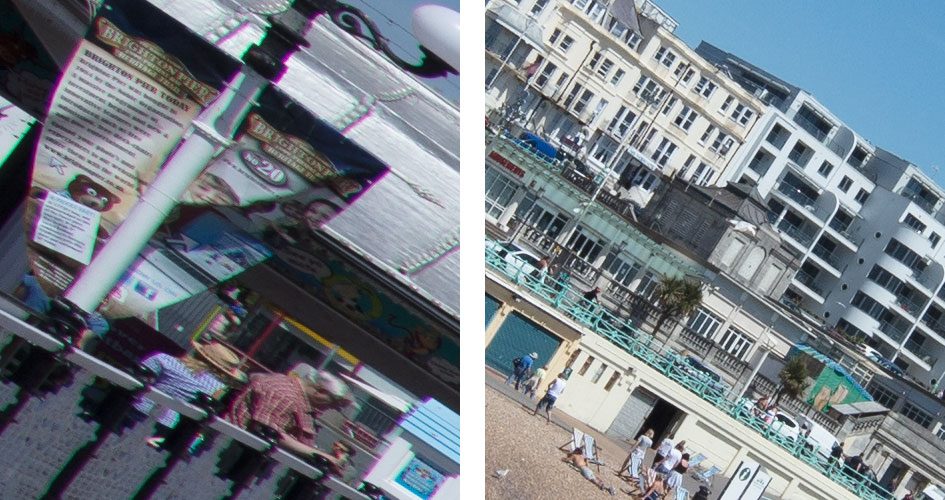
Above left: corner crop, above right: centre crop. Both 100% at 11mm f8
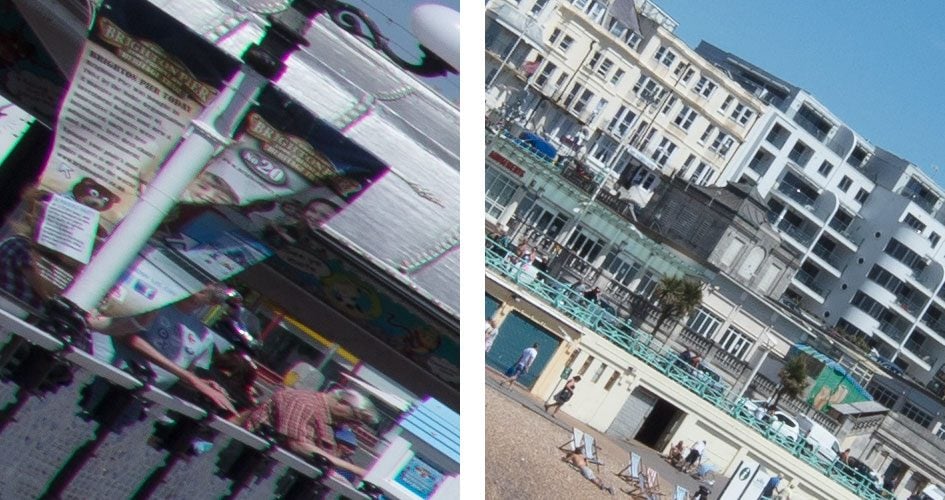
Above left: corner crop, above right: centre crop. Both 100% at 11mm f11
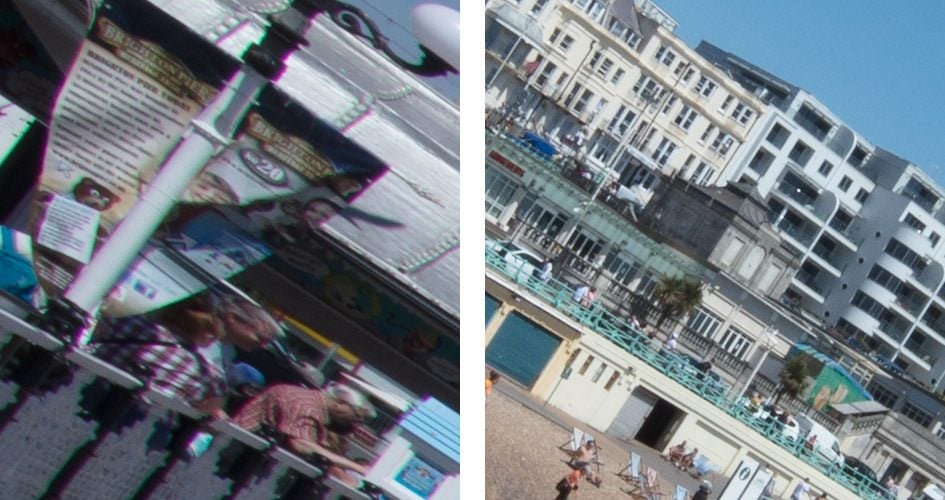
Above left: corner crop, above right: centre crop. Both 100% at 11mm f16
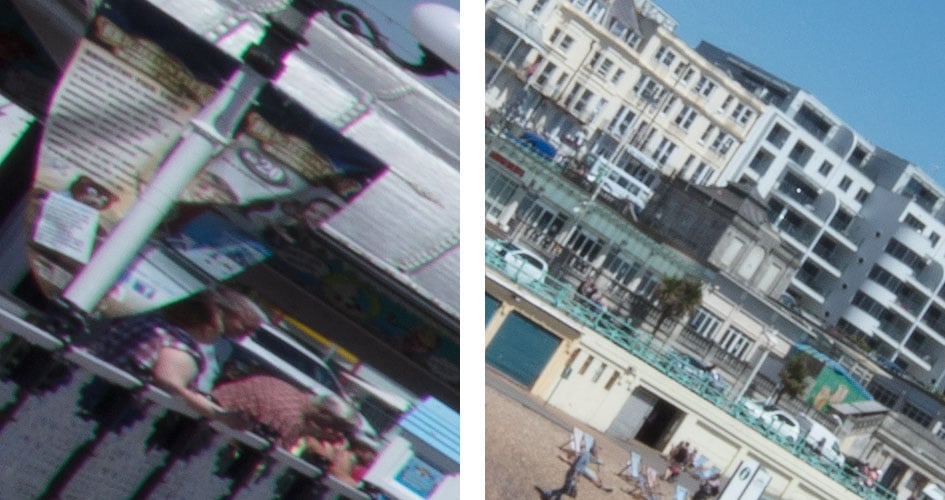
Above left: corner crop, above right: centre crop. Both 100% at 11mm f22
In my view, Canon has put the optical effort in where it counts, delivering very crisp details across the frame with decent geometry. Meanwhile the optical compromises of vignetting and fringing are both easily corrected digitally (whether in-camera on JPEGs or in RAW converters) with little or no compromise in quality. Scroll down for my results at 14, 20 and 24mm, or skip to my sample images!
Canon EF 11-24mm f4L USM quality at 14mm
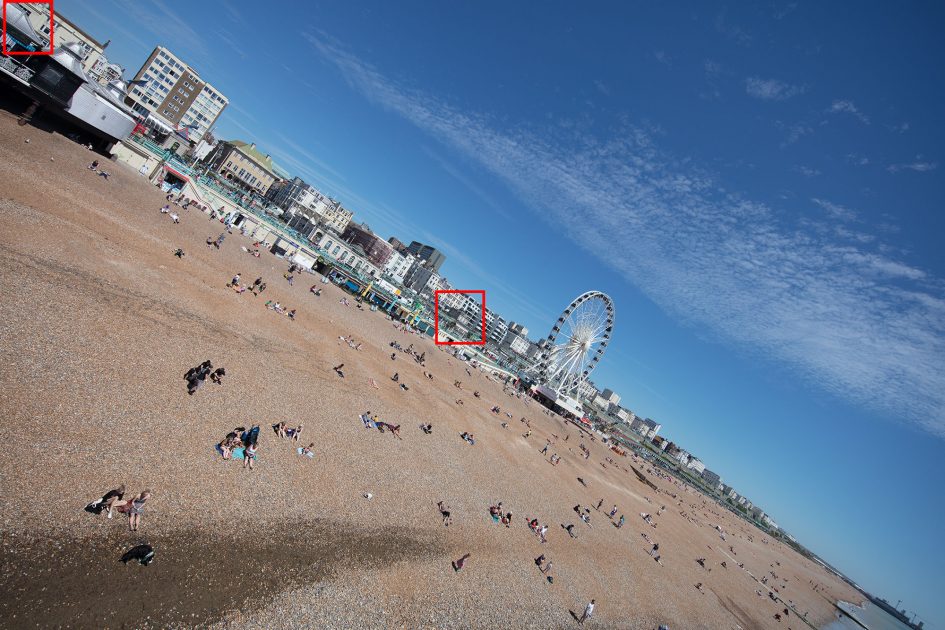
With the EF 11-24mm f4L USM zoomed to 14mm, the story is pretty much the same as at 11mm. As such there’s lots of detail across the frame even at the maximum aperture, although again you’d be advised to avoid f11 and especially f16 and f22 if you want to avoid softening due to diffraction. As before there’s visible coloured fringing in areas of high contrast in the corners at all apertures, but again it’s easily compensated using in-camera or RAW corrections. And again there’s some vignetting (darkening in the corners) at the maximum aperture, but again it’s essentially gone at f5.6. Scroll down to see how it compares at 20mm and 24mm or skip to my sample images!
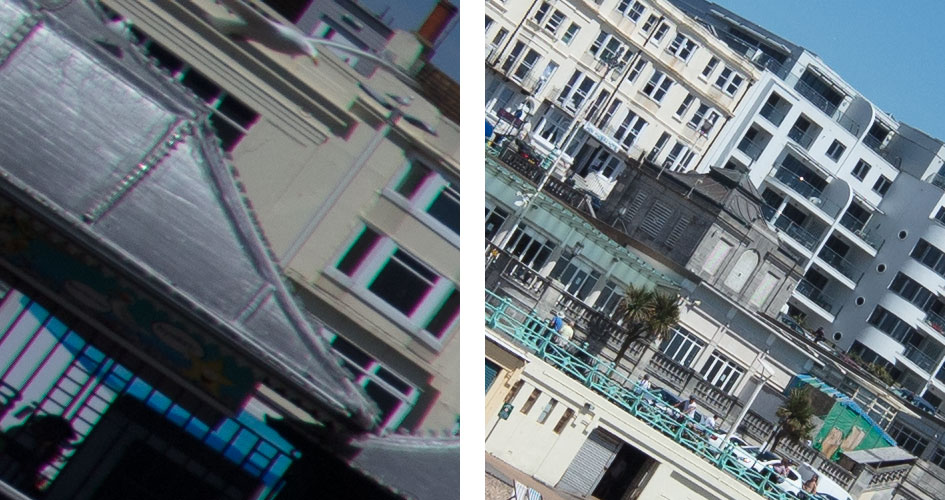
Above left: corner crop, above right: centre crop. Both 100% at 14mm f4
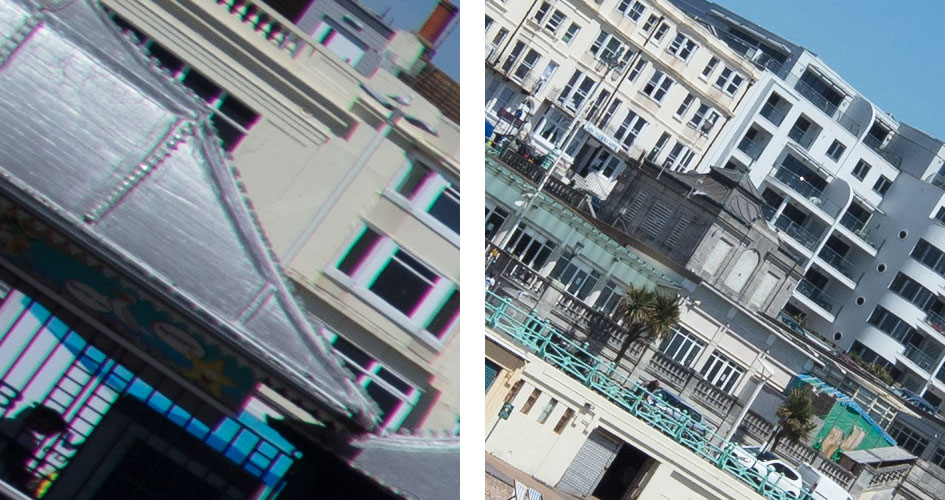
Above left: corner crop, above right: centre crop. Both 100% at 14mm f5.6
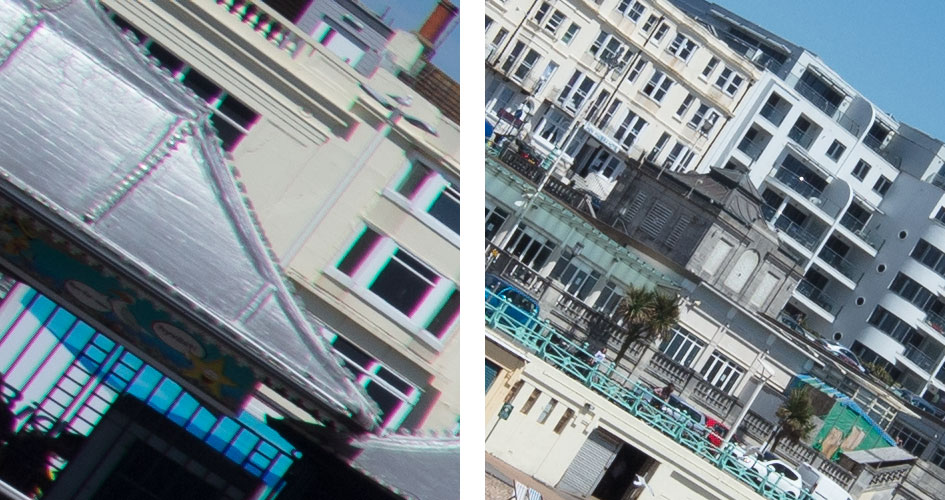
Above left: corner crop, above right: centre crop. Both 100% at 14mm f8
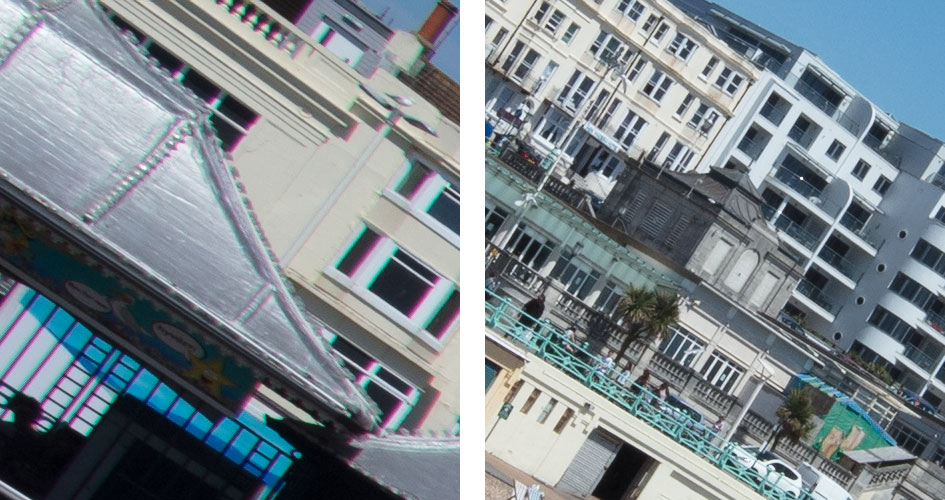
Above left: corner crop, above right: centre crop. Both 100% at 14mm f11
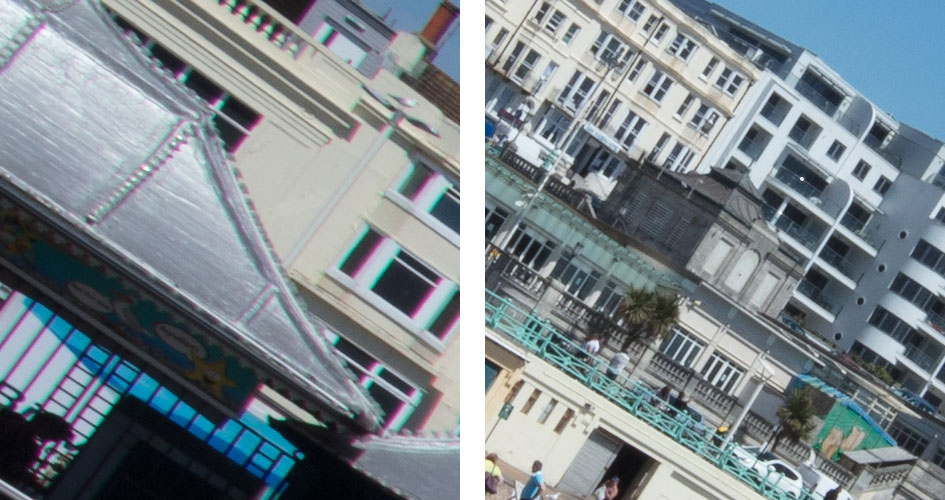
Above left: corner crop, above right: centre crop. Both 100% at 14mm f16
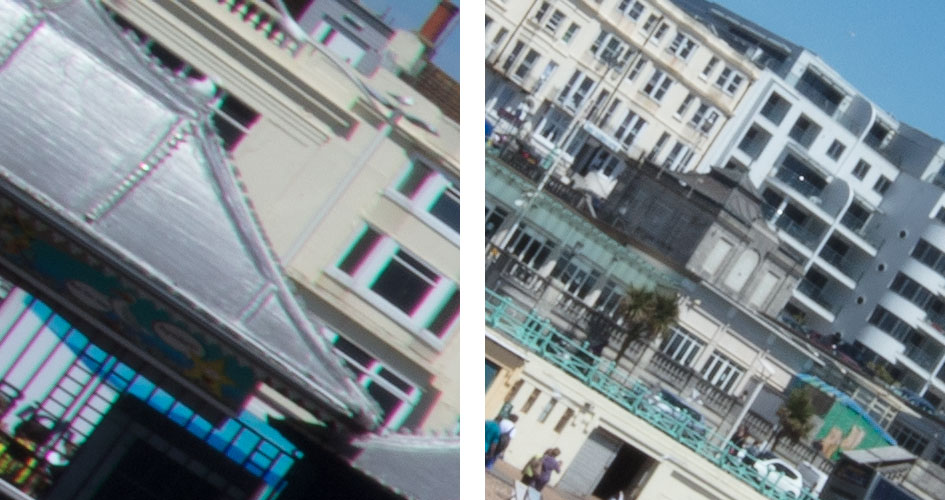
Above left: corner crop, above right: centre crop. Both 100% at 14mm f22
Canon EF 11-24mm f4L USM quality at 20mm
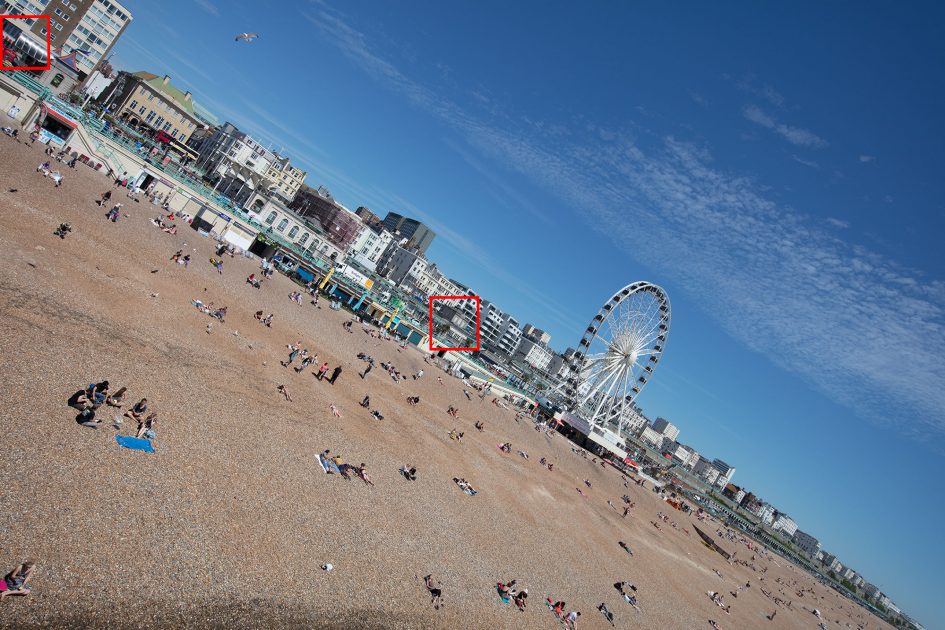
The Canon EF 11-24mm f4L USM’s optical performance remains consistent when zoomed beyond the halfway mark to 20mm. So again lots of detail across the frame from the get-go, with little to be gained by stopping-down; again avoid apertures of f11, and especially f16 and f22 unless you absolutely need to block incoming light or achieve the maximum depth-of-field. Again there’s some light fall-off in the corner at f4 that’s essentially gone by f5.6, and visible colour fringing at every aperture, but again both are easily corrected in-camera or with RAW conversions. Scroll down for my results at 24mm or skip to my sample images.
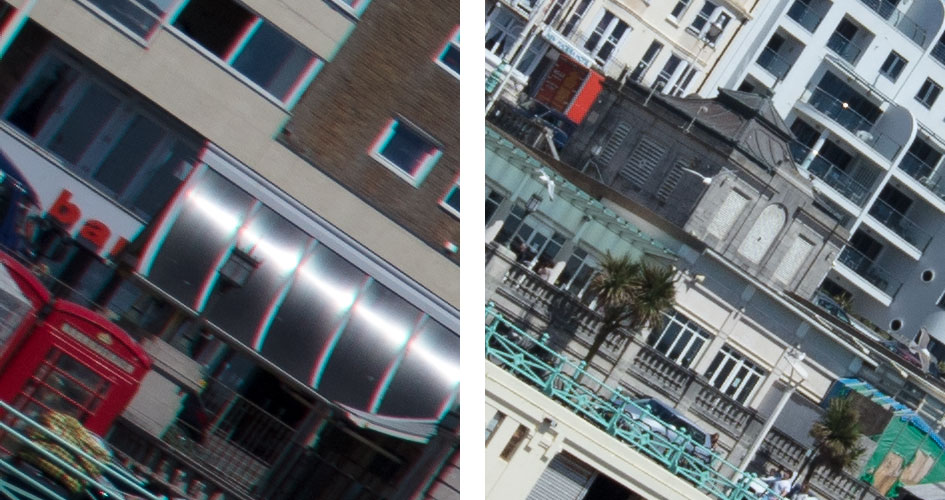
Above left: corner crop, above right: centre crop. Both 100% at 20mm f4
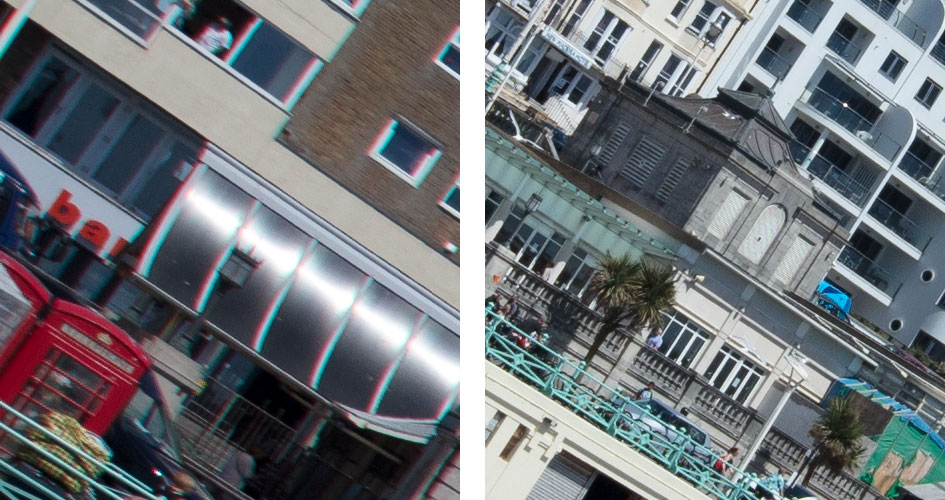
Above left: corner crop, above right: centre crop. Both 100% at 20mm f5.6
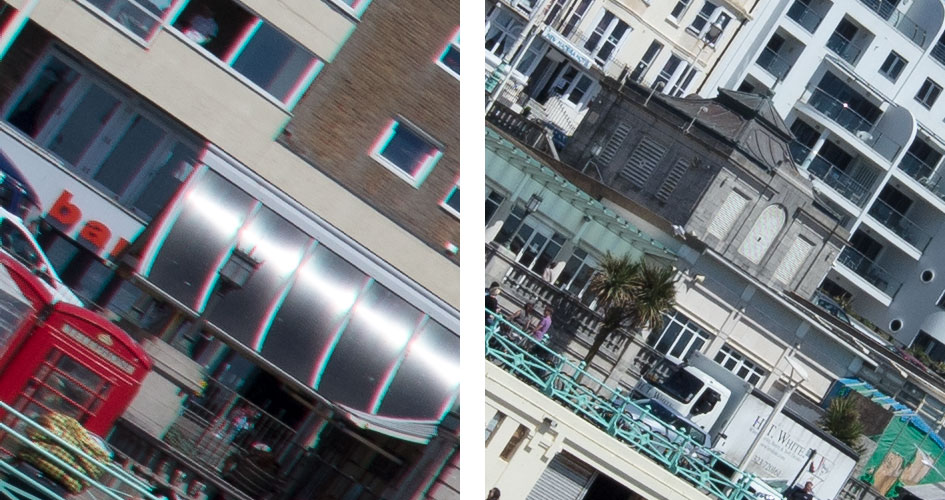
Above left: corner crop, above right: centre crop. Both 100% at 20mm f8
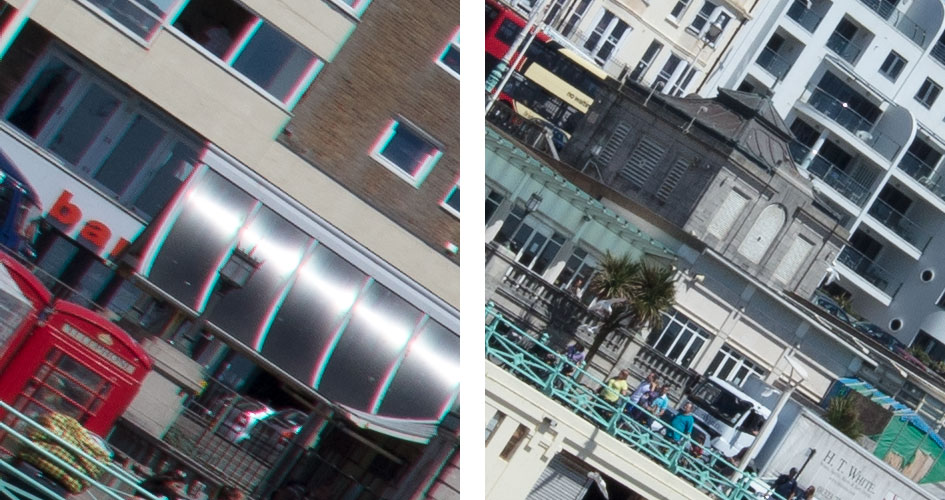
Above left: corner crop, above right: centre crop. Both 100% at 20mm f11
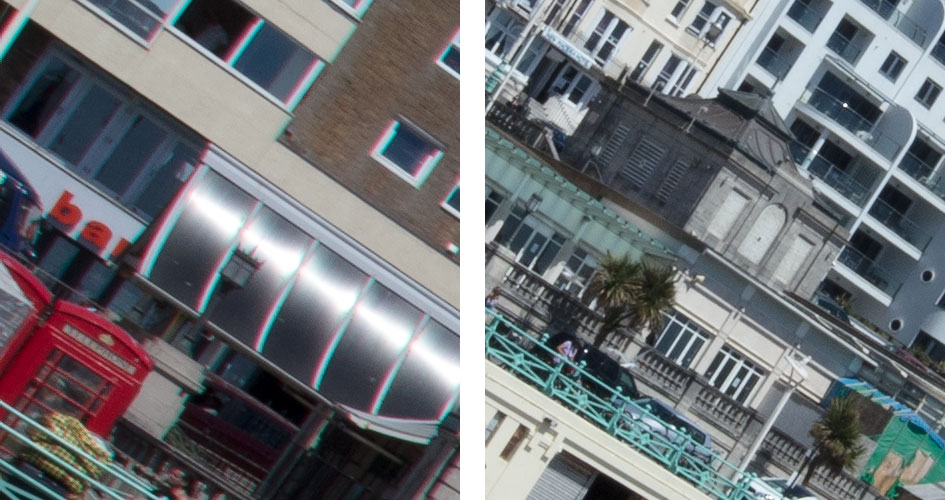
Above left: corner crop, above right: centre crop. Both 100% at 20mm f16
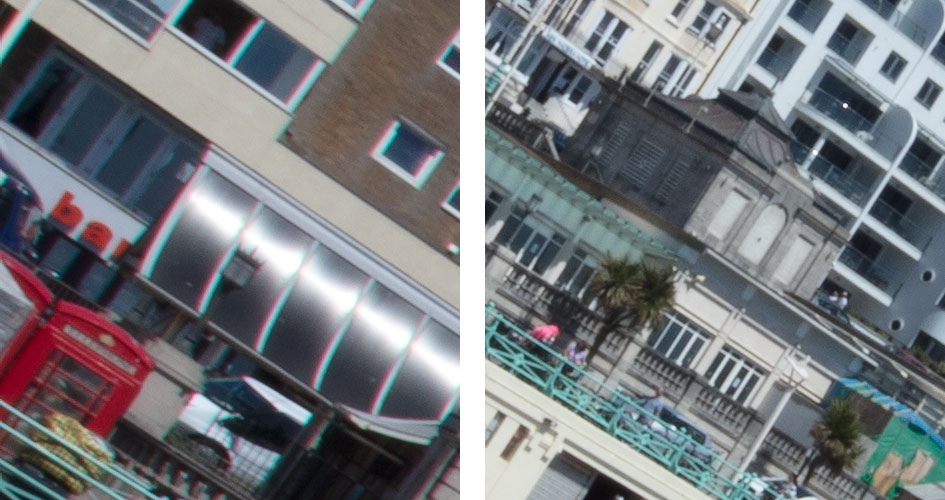
Above left: corner crop, above right: centre crop. Both 100% at 20mm f22
Canon EF 11-24mm f4L USM quality at 24mm
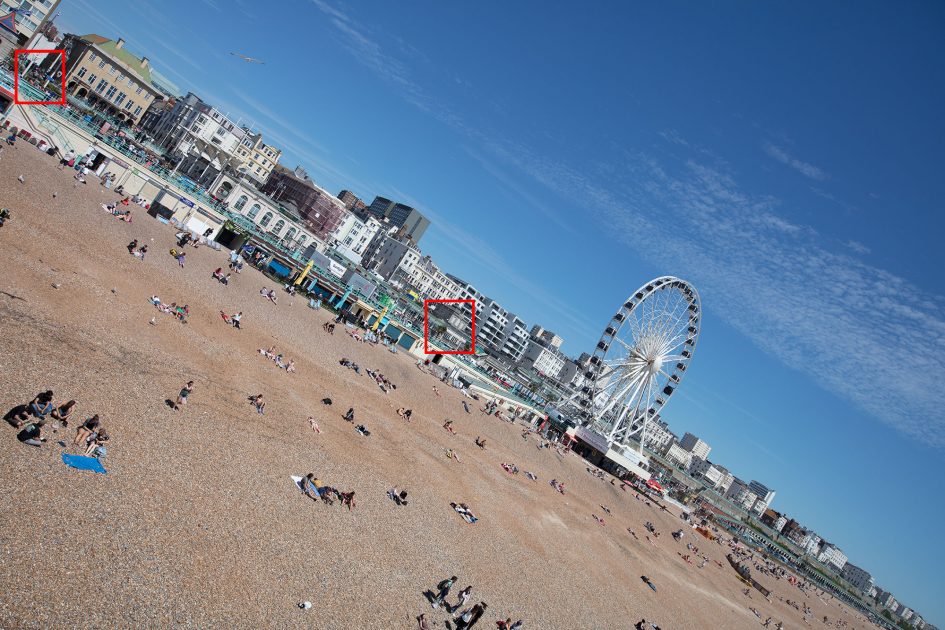
At its longest focal length of 24mm, the EF 11-24mm f4L USM’s optical performance remains consistent with the shorter lengths. So again lots of detail across the frame from the largest apertures, with little to be gained by stopping-down; again for the ultimate detail on high resolution bodies, avoid apertures of f11, and especially f16 and f22 unless you absolutely need to block incoming light or achieve the maximum depth-of-field. There’s still some light fall-off in the corner at f4, but it’s less than at wider focal lengths and again has essentially gone by f5.6. As before, there’s visible colour fringing at every aperture, but again it’s easily corrected in-camera or with RAW conversions. So once again, Canon has put the effort in where it counts with high performance in optical areas which are difficult or impossible to fix digitally, leaving electronic correction to pick-up any shortfalls in fringing and vignetting.
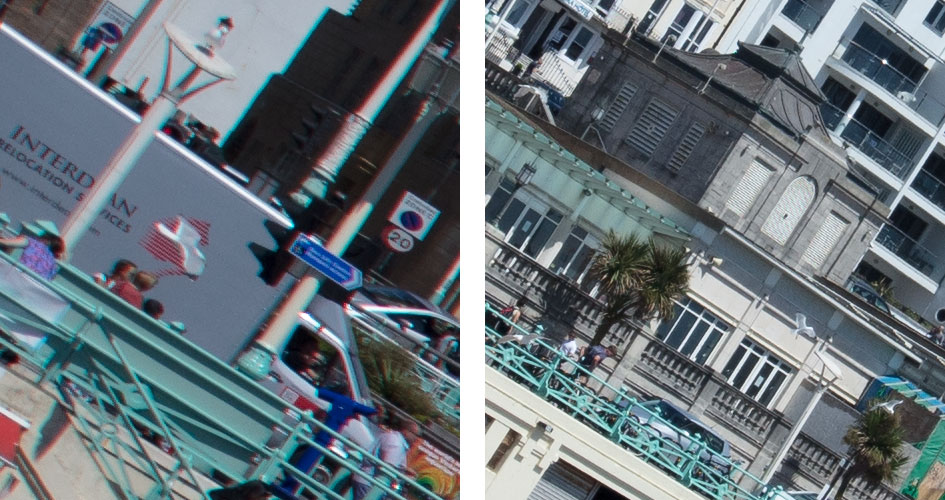
Above left: corner crop, above right: centre crop. Both 100% at 24mm f4
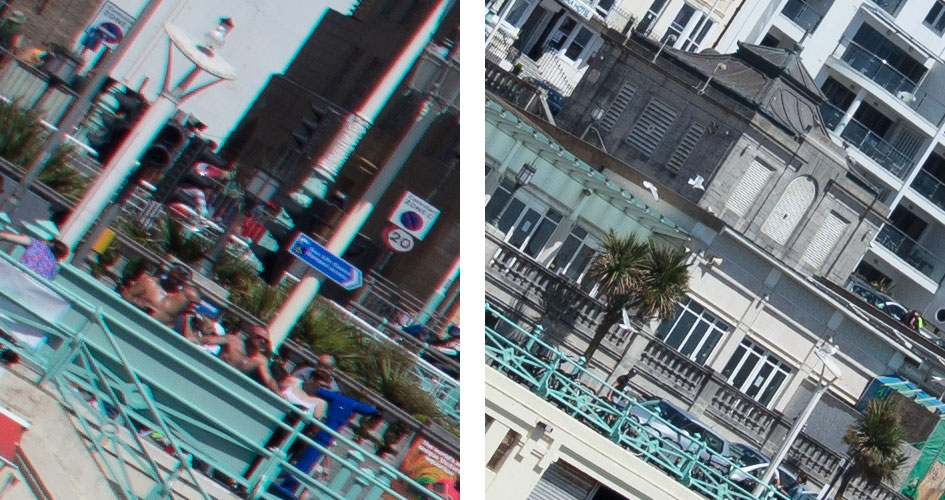
Above left: corner crop, above right: centre crop. Both 100% at 24mm f5.6
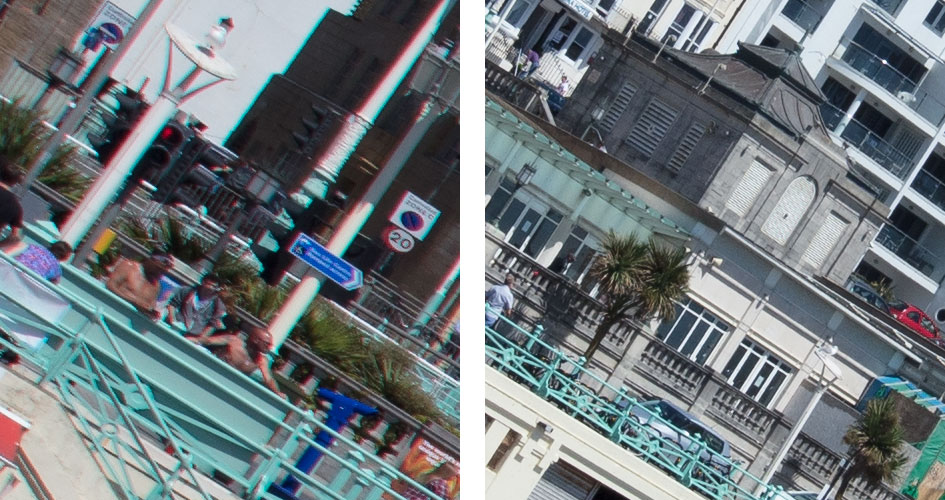
Above left: corner crop, above right: centre crop. Both 100% at 24mm f8
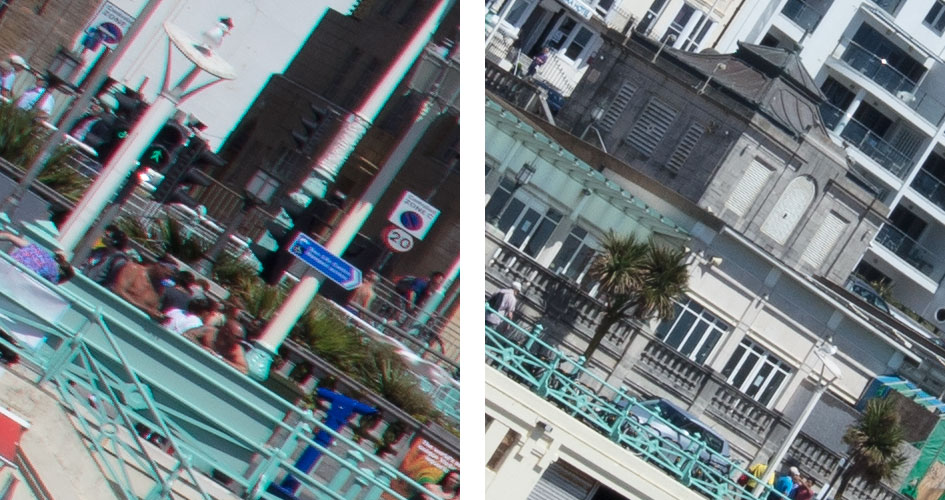
Above left: corner crop, above right: centre crop. Both 100% at 24mm f11
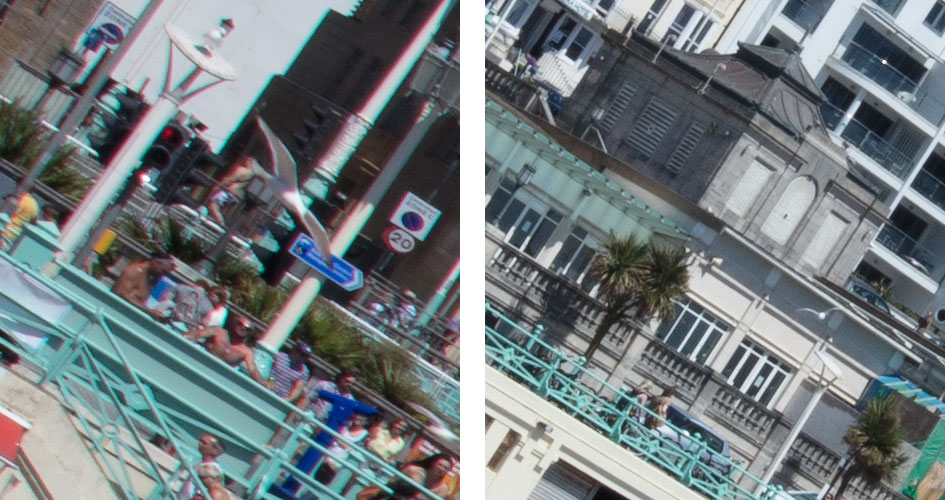
Above left: corner crop, above right: centre crop. Both 100% at 24mm f16
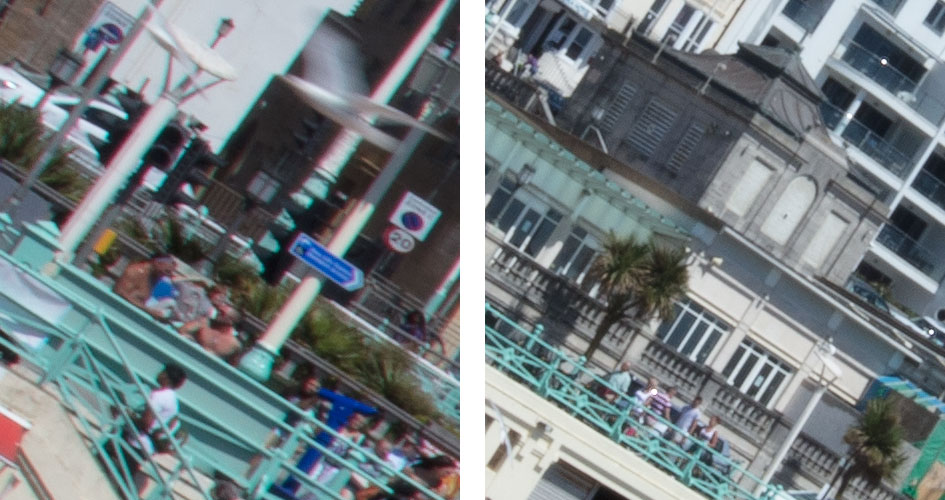
Above left: corner crop, above right: centre crop. Both 100% at 24mm f22
Next check out my sample images or skip to my verdict.
Check prices at Amazon, B&H, Adorama, eBay or Wex. Alternatively get yourself a copy of my In Camera book, an official Cameralabs T-shirt or mug, or treat me to a coffee! Thanks!


